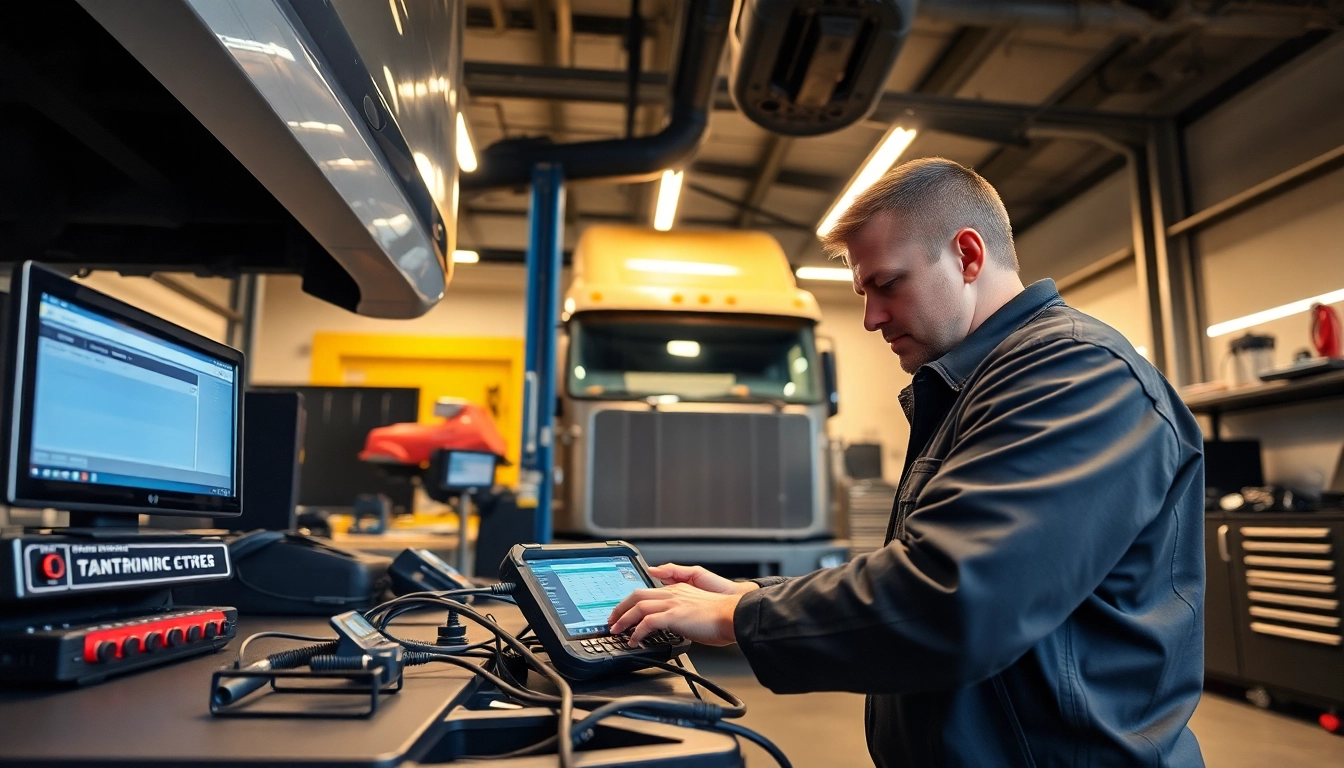Understanding Precision Die Cutting
What is Precision Die Cutting?
Precision die cutting is a manufacturing process that uses a specialized die to cut materials into specific shapes and sizes with high accuracy. This process is essential in various industries, allowing for the rapid production of custom parts, gaskets, labels, and other products. By utilizing high precision dies, manufacturers can achieve detailed designs that meet exact specifications, minimizing waste and maximizing efficiency. The precision die cutting process typically involves two main methods: flatbed and rotary die cutting. Each method has its benefits and applications, catering to diverse manufacturing needs.
For a detailed exploration of precision die cutting, it is crucial to understand the differences between the cutting techniques, materials used, and the various applications across industries.
Types of Precision Die Cutting Techniques
There are several techniques used in precision die cutting, each suitable for specific applications:
- Flatbed Die Cutting: This traditional method involves a hydraulic or mechanical press and a flat die. The material is fed under the die, where it is cut into the desired shape. Flatbed die cutting is particularly advantageous for producing a diverse range of shapes and is often used for thicker materials.
- Rotary Die Cutting: Utilizing a cylindrical die, this method cuts through roll-fed materials while they are in motion. This technique is ideal for high volumes and offers a continuous cutting process, making it an efficient choice for mass production.
- Laser Die Cutting: This modern technique uses focused laser beams to cut materials. Laser die cutting provides high precision and the ability to cut intricate designs without the need for physical dies. It is increasingly popular for prototyping and low-batch production.
Benefits of Using Precision Die Cutting
The precision die cutting process offers numerous advantages, making it a preferred choice for many manufacturers:
- High Accuracy: The ability to produce parts with tolerances as tight as ±0.005 inches ensures that components fit together seamlessly.
- Scalability: Precision die cutting can efficiently handle both small and large production runs, making it flexible for various project needs.
- Cost-Effectiveness: While initial die costs may be high, the long-term savings from reduced material waste and efficient production can significantly lower overall costs.
- Complex Shapes: It allows for the cutting of complex shapes that would be difficult to achieve with other methods, liberating design possibilities.
- Material Versatility: Precision die cutting can be applied to a wide range of materials, including paper, plastic, foam, and metal, catering to diverse industry requirements.
Key Applications of Precision Die Cutting
Industries that Rely on Precision Die Cutting
Precision die cutting finds applications in several industries, each with unique needs and challenges:
- Automotive: Used for producing gaskets, seals, and various interior components that require exact fits and materials.
- Medical: In the medical industry, precision die cutting is crucial for creating components for devices, packaging, and surgical instruments, where cleanliness and accuracy are paramount.
- Electronics: Manufacturers of electronic devices utilize precision die cutting for making parts like insulating gaskets and adhesive circuits.
- Packaging: The industry heavily relies on precision die cutting for custom packaging solutions, including die-cut boxes, inserts, and protective packaging materials.
- Textiles: Fabric companies use die cutting for intricate designs, patterns, and shapes in garments and upholstery materials.
Popular Products Made with Precision Die Cutting
The capability to create highly customized products is one of the stark advantages of precision die cutting. Some commonly produced items include:
- Labels and Stickers: Ideal for branding, compliance, and decoration, produced with precision cuts to enhance aesthetic appeal.
- Gaskets and Seals: Essential for ensuring airtight connections in mechanical applications, providing durability and efficiency.
- Foam Inserts: Custom inserts for tools, electronics, and delicate items, ensuring safe storage and transportation.
- Packaging Components: Die-cut boxes, trays, and partitions designed for specific products and enhanced customer experience.
- Advertising Materials: Die-cut displays and promotional items tailored to market products effectively.
Case Studies Highlighting Success with Precision Die Cutting
Several organizations have harnessed the benefits of precision die cutting to improve their production processes:
For instance, a manufacturer in the automotive sector found that by switching to rotary die cutting from traditional methods, they reduced their production times by 30% while maintaining higher tolerances on critical components. Similarly, a medical device company utilized laser die cutting to create prototypes rapidly, allowing them to bring products to market faster than ever before. Such real-world applications highlight the transformative power of precision die cutting in enhancing efficiency and output quality.
Selecting the Right Precision Die Cutting Services
Evaluating Quality and Turnaround Time
When selecting a precision die cutting service provider, quality and turnaround time are paramount. Businesses should evaluate potential partners based on:
- Certifications: Look for ISO certifications or industry-specific qualifications that indicate adherence to quality standards.
- Turnaround Times: Assess the estimated production times, ensuring they align with your project deadlines.
- Sample Products: Request prototypes or samples to gauge the quality of previous work and precision capabilities.
How to Compare Precision Die Cutting Providers
Comparing different providers can feel daunting; however, the following steps can simplify the process:
- Get Multiple Quotes: Request quotes from several service providers to understand pricing structures and capacities.
- Review Portfolios: Examine each provider’s portfolio to assess their previous work and expertise in your required applications.
- Client Testimonials: Seek reviews or case studies from previous clients to ascertain reliability and customer satisfaction levels.
Cost Considerations in Precision Die Cutting
Pricing for precision die cutting can vary significantly based on different factors:
- Design Complexity: More intricate designs typically incur higher costs due to increased setup time and die complexity.
- Material Choice: The cost of the material being used will also impact the overall price, as certain materials may require specialized handling or cutting methods.
- Production Volume: Higher volumes usually mean lower costs per unit, so it is essential to evaluate long-term needs when getting quotes.
A detailed budget assessment helps ensure that your investment in precision die cutting aligns with your financial goals.
Best Practices for Precision Die Cutting Projects
Designing for Precision Die Cutting
Proper design is critical to the success of any die-cut project. Keep these guidelines in mind:
- Minimize Complexity: While precision die cutting allows for complex shapes, keep designs as simple as possible to reduce costs and improve cut efficiency.
- Provide Accurate Specifications: Clearly outline dimensions, tolerances, and material type when submitting designs to ensure accurate production.
- Utilize Standard Sizes: Using standard material sizes can lead to significant savings and reduced waste.
Understanding Tolerances in Die Cutting
Tolerances play a critical role in precision die cutting, dictating how closely parts must fit together. Organizations should:
- Set Realistic Tolerances: Understand the limitations of your die cutting process; for instance, industries like automotive may require tighter tolerances than others.
- Account for Material Behavior: Different materials respond differently during the cutting process, impacting the final part’s dimensions. Consider this when setting tolerances.
- Communicate with Your Provider: Ensure constant communication with your die cutting service provider to establish and evaluate tolerances throughout production.
Tips for Optimizing Material Usage
Effective material management is vital for cost efficiency in precision die cutting. Here are some practices:
- Optimize Nesting: Utilize software that efficiently nests cutting designs to minimize waste material on the sheet or roll.
- Consider Tolerance Needs: Assessing the necessary tolerances can inform design modifications that may result in material savings.
- Choose the Right Material: Selecting the appropriate material not only aids in achieving design goals but can also reduce costs and enhance performance.
Future Trends in Precision Die Cutting
Technological Advancements in Die Cutting
The die cutting industry is evolving with advancements in technology, including increased automation and software integration. Key trends include:
- Automation: Many die-cutting workflows are moving towards automation, reducing production times and labor costs while increasing accuracy.
- Digital Die Cutting: This trend integrates digital processes into die cutting, allowing for faster changeovers and smaller batch sizes.
- Advanced Software Solutions: Enhanced design and cutting software are facilitating better precision and efficiency, enabling manufacturers to innovate their offerings.
Sustainability Practices in Precision Die Cutting
As industries strive for sustainability, precision die cutting is adapting through various practices:
- Recyclable Materials: Many companies are shifting towards using eco-friendly materials that can be recycled after use.
- Minimized Waste: Advanced cutting techniques and optimized layouts are reducing waste, contributing to eco-efficient manufacturing.
- Energy Efficiency: Newer machines are designed to utilize less energy, promoting a lower carbon footprint in production facilities.
The Role of Precision Die Cutting in Emerging Industries
Emerging sectors such as renewable energy, biotechnology, and electric vehicles are increasingly benefiting from precision die cutting technology. The unique requirements and rapid development cycles in these fields necessitate the adaptability and precision that die cutting offers. Moreover, as industries look to innovate and meet regulatory demands, precision die cutting will play a crucial role in producing compliant and effective solutions.



